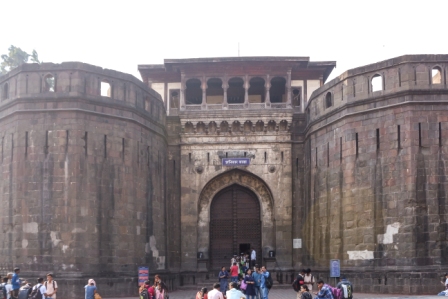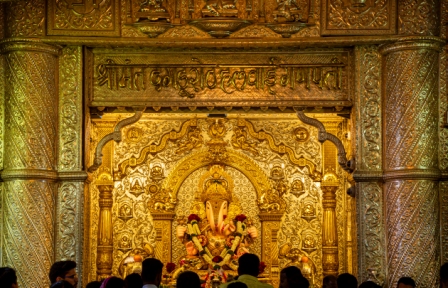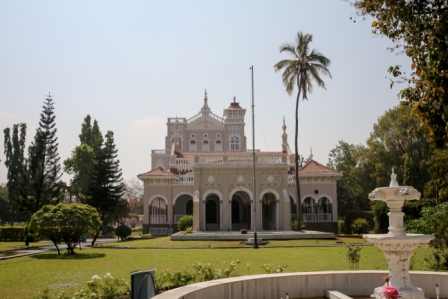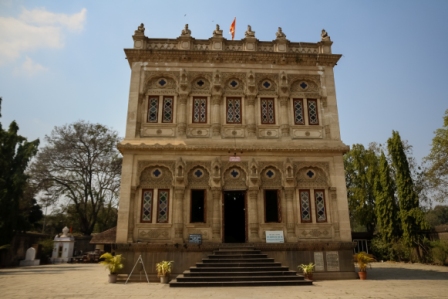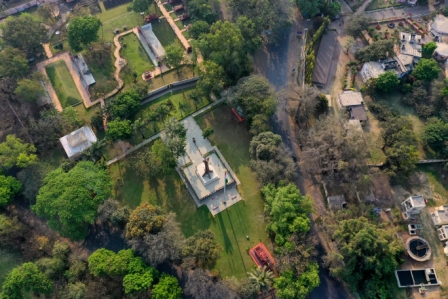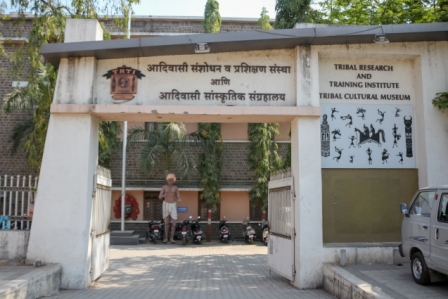Pune is a popular travel destination boasting many natural and historical tourist attractions.
Shaniwar Wada: Shaniwar Wada was the seat of the Peshwa rulers of the Maratha
Empire until 1818 when the Peshwas surrendered to the British. It was built by the Peshwa Bajirao I
of Maratha Dynasty in 1730. The Palace was destroyed in a big fire in 1827. The 21 feet tall massive
door of the palace known as Delhi Darwaza is one of the remains of the grand old Palace.
Dagadusheth Halwai Ganapati Temple: The temple was founded in 1893 by
Dagadusheth Halwai, a sweetmart seller who became a wealthy businessman. Devotee comes from all
over to offer prayer at this famous temple.
Aga Khan Palace or Gandhi Memorial: This palace was built in 1892 by Imam Sultan
Muhammad Shah Aga khan III. During the Quit India Movement in 1942, Mahatma Gandhi and his wife
Kasturba Gandhi along with Mahadeobhai Desai were imprisoned in the palace. Kasturba Gandhii and
Mahadev Bhai Desai passed away during their captivity at the Palace. Prince Shah Karim Aga Khan
IV donated the palace to the Government of India in 1969 as a mark of respect to Gandhiji and
his philosophy. Collection of pictures and photographs of the important incidents in Mahatma
Gandhi’s life and few of his personal items are preserved here.
Pataleshwar Caves: Pataleshwar Caves has a long history dating back to the 8th
century AD. Situated just across the river on the Jungli Maharaj Road, the cave temple bears
resemblance with the rock-cut temples of Ellora. Made out of a single hard rock, the temple has
its main deity as Pataleshwar. The temple is used by worshippers even today.
Raja Dinakar Kelkar Museum:
Established in 1962 by Baba Dinakar Kelkar and presented to the Maharashtra government in 1975,
the museum has 20,000 different articles. All the articles were personally collected by Baba
Kelkar. The 36 sections of the museum displays a wealth of antiques, carved palace doors,
pottery, 17th century miniatures, a priceless collection of nut crackers, lamps, musical items,
hookah pipes, hair drying combs and other such items from the Mughal and Maratha period.
Shinde's Chhatri:
Shinde's Chhatri was constructed as a memorial of the Maratha noble character Shri Mahadji
Shinde. The 18th century military leader, Shri Mahadji Shinde, served as the commander-in-chief
of the Maratha army under the Peshwas from 1760 to 1780. Reminiscent of the Maratha rule, the
structure is known for its exquisite architecture that reflects the style used in Rajasthan.
Made out of iron, the entrance gate shines till this day. The complex of the memorial had a
temple, dedicated to Lord Shiva, which was built by Mahadji Shinde, in 1794.
Saras Baug:
Constructed by Nanasaheb Peshwa, it is located against the scenic background of Parvati Hills.
The imposing garden is a popular relaxation spot and is exquisite with elegant fountains and
lush green lawns. The garden houses a renowned temple constructed in 1774 by Madhav Rao Peshwa.
The temple is dedicated to Lord Ganesha and there is a Ganesh Murti Museum, enclosing large
number of Ganesh statues. .
Parvati Hill:
Parvati Hill, believed to be built during the 17th century, is a picturesque spot perched atop
Pune city. It enshrines the idols of Goddess Parvati, Lord Ganesha, Lord Vishnu, Devateshwar and
Lord Karthikeya. This temple was solely used for the prayers by the Peshwa rulers in bygone era.
A climb of 108 wide stone steps leads to the hill top temple
Osho International Meditation Resort:
Ashram of Bhagwan Rajneesh (Osho Ashram), in a 32 acre beautiful campus, is in Koregaon Park
area of Pune. The ashram is a prime attraction for tourists who are followers of Bhagwan
Rajneesh ideologies and preaching. It is a resort for meditation and yoga. Nearby the Commune,
Osho Teerth, also known as Nulla Park, is located.
Vishram Bagh Wada:
Vishram Bagh Wada was constructed by Peshwas during the 18th century. Made in quality wood,
beautiful facades of the structure used to be its prominent highlights. The three-storied
mansion is famous for its entrance and the balcony with carved woodwork
Rajiv Gandhi Zoological Park and Katraj Snake Park:
The Rajiv Gandhi Zoological Park, managed by the Pune Municipal Corporation is spread over 165
acres of land and has a snake park, an animal orphanage, a zoo and the 42-acre Katraj Lake.
Animals in the zoo include Tiger, White Tiger, Leopard, Sloth bears, Sambhars, Barking deer,
Black bucks, Peafowl, Monkeys, and Elephants. Reptiles include Indian rock python, Cobra,
Snakes, Vipers, and Indian crocodiles. Amphibians such as Indian star Tortoise also feature in
the zoo. The snake park has a large collection of snakes, reptiles, birds and turtles. There are
over 160 species of snakes, including a nine foot long King Cobra.
Pune University:
Pune’s oldest education institute is the Pune University formed in 1948. Located on 400 acres of
sprawling grounds, it was once the official residence of the Governor of Mumbai during the
monsoons.
The IUCAA, one of the pioneering institutes for research in astronomy, is located in the lush
green environment of Pune University.
David Synagogue: David Synagogue is an example of Victorian architectural style
and constructed by David Sassoon in 1861. At the top level of the synagogue, an exclusive prayer
hall for ladies, with a gallery, is present. Huge pillars in Gothic style and a clock tower
overlooking the whole city are prominent features of this edifice.
Tribal Museum: Tribal Museum exhibits the cultures of the tribal communities
belonging mainly to the Sahyadari and Gondwana regions. The museum showcases collection of items
like pictures and artefacts, which depict the life as well as customs of the tribal people.
Collections of the museum also include articles finding their way in the daily use of the tribal
communities like ornaments, musical instruments, clothes, utensils, weapons and others.
National Defence Academy: The National Defence Academy (NDA), located in
Khadakwasla, is the Joint Services academy of the Indian Armed Forces, where cadets of the three
services, the Army, the Navy and the Air Force train together before they go on to
pre-commissioning training in their respective service academies. It is the first tri-service
academy in the world.
National War Museum: National War Museum was built by Pune citizens. The museum
is made of pillars and measures 25 ft in height. Its construction done by collecting funds from
the citizens of the country made it the only war memorial in South Asia to be built by raising
funds from the public.
Theatre: The Tilak Smarak Mandir, Bala Gandharva Rangmandir, Bharat Natya
Mandir, Yashwantrao Chavan Natyagriha and Sudarshan Rangmanch are prominent theatres in the
city. Ganesh Kala Krida Rangamanch is the largest closed theatre in the city, with a seating
capacity of 45,000.The Sawai Gandharva Sangeet Mahotsav, one of the most prominent and
sought-after Indian classical music festivals in India is held in Pune every year in December.
It commemorates the life and achievements of Pandit Sawai Gandharva.
